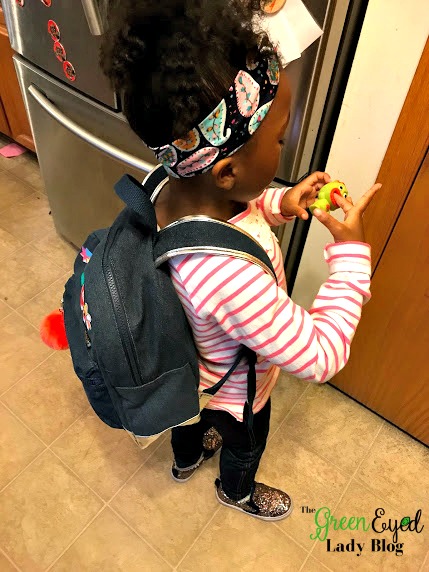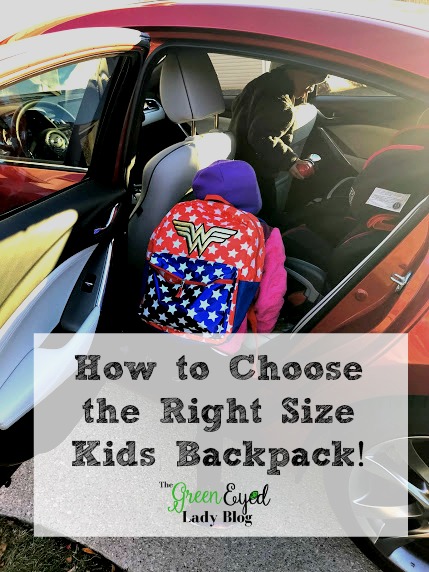Is your child carrying the right size backpack?
Carrying the proper size backpack is something that I have always paid close attention to with Emma and DJ. Even though they were only carrying a water bottle and folder back and forth to school, it still was important that their backpack was the right size, so it didn’t hurt their backs.
Whatever a child or teen’s age, learn how to fit his school backpack to his body so he avoids straining his back and shoulders.
According to the American Occupational Therapy Association, the average student wears a backpack that weighs nearly a quarter of the child’s body weight. Thirty percent of students carry a pack weighing up to a third of their body weight at least once a week. Properly fitting and loading a school backpack can eliminate back pain, shoulder strain, tingling arms, and poor posture.
Fitting Backpacks for Kids

Look for a backpack that sits at the curve of the child’s lower back. Avoid bags that sag lower than the hips. Although it seems more economical to let a child grow into a backpack that he can use for several years, it could cause weakened muscles and stooped posture.
Look for padded shoulder straps that can be adjusted so they fit snug. The pack should also be padded at the back and have a waist strap that the child uses. Slinging a backpack over one shoulder isn’t advised to avoid straining the spine as it curves to the side to counterbalance the weight within the bag.
Proper Use of School Backpacks

During the school year, occasionally weigh the child’s backpack when he or she gets home. No matter how sturdy the bag, it shouldn’t be carrying more than fifteen percent of the child’s body weight, according to the American Occupational Therapy Association. For a 100 pound child, this equals 15-pounds of books and equipment; a 60-pound child shouldn’t carry more than nine pounds in his pack.
If a heavy backpack is an issue, have the child dump out everything he carries with him and evaluate what he truly needs. Kids should avoid carrying things around with them out of habit and instead fill the backpack with what they need that day. Repack the bag with heavier items at the bottom. Flat items (like notebooks and textbooks) should be placed closest to the back. Small items that could shift around should go into the compartments.

Emma and DJ have a lot of backpacks, some are for school and others are for when we are out and about, it usually holds snacks, toys and a change of clothes. Even this type of backpack it’s important to watch what is inside because toys can still out and poke you in the back and its easy for the bag to get overly stuffed with everything you think you need at all times. Darrick and I try to clean them out after each use to make sure the next time we need to use them the kids are piling things on top of each other, but rather using a cleaned out bag!
One solution could be giving a child a separate bag or pack for athletic equipment or materials needed for after-school programs so he doesn’t have to carry around unnecessary items throughout the day. If the child really can’t eliminate what he carries, consider a rolling backpack, if the school allows it. If heavy loads are a rare occurrence, the child can remove a heavy item from the pack and carry it in his arms.
A proper fitting backpack and thoughtful packing can help reduce the risk of shoulder and back strain, tingling arms and hands, and poor posture.



 For those tha
For those tha





